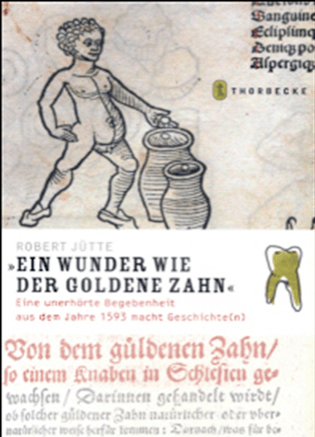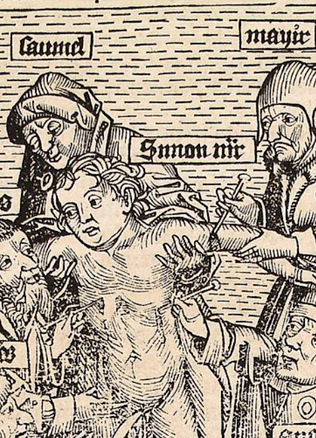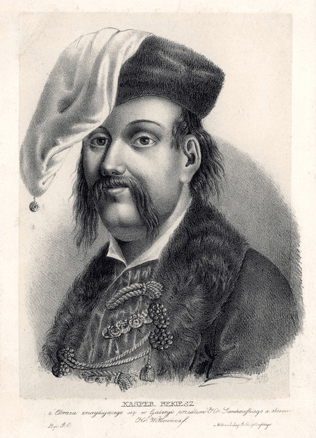The Lithuanian Chronicles’ Tale of the Founding of Vilnius: Myth or History?
As the legend goes…
The legend about the founding of Vilnius is one of the most popular stories about ancient Lithuania. It was recorded for the first time in the Lithuanian Chronicles in the 1530s. We read in the Bychowiec Chronicle: “Once grand duke Gediminas left five miles from his capital Kernavė to hunt, beyond the Neris, and found a beautiful hill in the forest, surrounded by oaks and plains; he liked it very much, he began living there, where Old Trakai had been, and from Kernavė moved his capital to Trakai. Soon thereafter, grand duke Gediminas left to hunt four miles from Trakai; and found a beautiful hill along the River Vilnia, on which he met an enormous beast, an auroch, he killed it on the hill, which is still called Taurakalnis [Auroch Hill]. And since it was very late for returning to Trakai, he stopped at Šventaragio Valley, where the first dukes had been burned, and stayed the night there. There while sleeping, he dreamed that on the hill, which was called Kreivusis (Crooked), and now Plikasis (Bald), stood an enormous iron wolf, and he howled like there were one hundred wolves. He awoke from his sleep and said to his wizard, named Lizdeika, which had been found in the nest of an eagle, – this Lizdeika was Gediminas‘ wizard and the high priest of the pagans: “I had a strange dream.” And he said everything that had appeared to him in his dream. The wizard Lizdeika said: “Grand Duke, the iron wolf means: a capital will stand here, while the howling in it – that its fame will spread around the world.” And Grand Duke Gediminas the very next day, choosing to stay, sent for people and established a castle in Šventaragio [Valley] – the Lower [Castle], while the second on Kreivusis Hill, which is now called Plikasis, and gave the castles the name of Vilnius. And, after founding the city, he moved his capital to Vilnius (…).”
Sources of inspiration for chroniclers
The legend was written down in the 16th century, i.e. 200 years after the events that were depicted. Chroniclers dressed the legend up in the clothes of the time, because Gediminas definitely did not measure distances in miles. What’s more, Lizdeika was called the pagan high priest. The phrase about the fame of the future capital spreading “around the world” reminds one of the words from Genesis, which talk about the building of the Tower of Babel. The things denoted here shouldn’t be surprising, as the chroniclers were Christian. The chronicles’ tale about the three capitals corresponds to the archetype that was characteristic for our neighbours. Let’s remember the plotline of Russian chronicles about the three centres of ancient Rus’ and the stories of Polish chronicles about the moving of the capital from Kruszwica to Gniezno, and from there to Krakow. The chroniclers were acquainted with the chronicles of the ancient Rus’ and Maciej Miechowita’s Polish Chronicle, thus these links are no coincidence, all the more that they took a literary cliché about the founding of cities during the hunt of dukes from the Halych-Volhynian Chronicle.
However, one can find traces of old beliefs and rituals in this intriguing story from our chronicles.
Mircea Eliade (1907-1986), a historian of religion, observed that “if there is no (godly) sign that is seen, it is created. For example, by employing the use of a kind of calling forth, an evocatio, with the help of animals; they show that the place is suitable for building a holy temple or village; or a domestic animal is let free – let’s say an ox – and a few days later he is looked and right there, in that place, he is sacrificed. Afterwards an altar is built, and around it a village.”
The dreamed-up capitals
The chronicles’ version is more complex. An auroch is hunted down, Gediminas spends the night in a sacred place – a field in Šventaragio Valley, waiting for a revelation. This is known from ancient times as the practice of incubation (which was illuminated in greater detail by scholar of religion Gintaras Beresnevičius). We find similar tales in texts from other nations. According to the Roman epic the Aeneid, King Latinus brought the furs of one hundred sacrificed sheep to a holy place and slept there the entire night waiting for the words of the god Faunus, while Aeneas, the forefather of the Romans did not need any sort of special rituals – after falling asleep near the Tiber, the river god Tiberinus revealed in a dream of the founding of Alba Longa, the predecessor to Rome.
Prophetic dreams, prophecies, and unusual things are always met in stories about the founding and prospering of capitals or nations and empires. There are stories like that about Rome, Prague, Kyiv, Moscow, and the Ottoman Empire. Perhaps the most well-known legend is the founding of Rome, especially the episode about Romulus and Remus, twin who were suckled by a she-wolf. Some researchers see ties between this episode and the iron wolf of the chronicles, however they are most likely not direct links, because the image of the iron wolf was widespread in the folklore of Lithuanians as well as other nations. The myth of the founding of Rome was known to the chroniclers who said that Lithuanians came from Romans, and this noticeable similarity must have made an impression upon them. However, the legend of the founding of Vilnius is not a clone of the myth of the founding of Rome.
Lizdeika and Merlin
Gintaras Beresnevičius has uncovered interesting ties of the finding of Lizdeika in an eagle’s nest with the images of Siberian tribes concerning shamans.
According to the chroniclers, Lizdeika was the high priest of the pagans. It appears that only a wise man of such stature could explain the dream of the ruler, for held the highest status in the hierarchy in ancient times. The duet of a ruler and wise man or magician is a well-known concept. Let’s remember the characters of Celtic folklore that became popular during the Middle Ages – King Arthur of Britain and his wizard Merlin, who like Lizdeika, was closely connected to the forest (according to legend, he grew up in the forest). Though in this context we shouldn’t forget perhaps the most famous “dream specialist”, the prophet Daniel, who explained the dreams of King Nebuchadnezzar. Today it’s not possible to say how much and on what scale what was depicted in the chronicles really did happen. There was some ritual that existed, even if it doesn’t exactly fit with what is described in the chronicles. Perhaps a spectacle in its own right, done by an agreement with the wizards in advance?
Thanks to the chroniclers, we have a legend that has survived to our days. It goes together beautifully with the first mention of Vilnius in the letters of Gediminas in 1323, in which Vilnius is designated as the place where they were written; in one letter, duke Gediminas named the city “our royal city of Vilnius,” i.e. the capital of Lithuania. The moving or choosing of a capital, which was the most importance residence of the Grand Duke, was a good reason to put it down in words. And the ancient religion was employed to this end.
Who dictated the choosing of the capital?
The move was dictated by rational motives.
Vilnius’ strategic location (the favourable relief, and confluence of the rivers) was the reason that the Upper Castle was the best citadel of the nation, the only one that the Teutonic Knights were never able to occupy in what could be labelled “the real Lithuania.”
As events of the future showed, it was a shrewd move that was dictated by necessity, as Kernavė was wiped off the face of the earth during the attacked of the second half of the 14th century, while Trakai was no able to resist attackers.
Gediminas’ choice was determined by the totality of military, political and economic motives – the River Neris, suitable for shipbuilding, guaranteed growth for the city (Vilnius was already a settlement and had a castle during what is known as its “founding”). The city gave additional security guarantees for the ruler’s residence and was its backbone – Gediminas supported the production of the artisans and put together a regular and large garrison. Lithuania became a large country, mostly oriented toward the European model of capitals – we understand from Gediminas’s letters that he wanted to be like other European monarchs.
Literature: Lietuvos metraštis. Bychovco kronika, vertė, įvadą ir paaiškinimus parašė R. Jasas, Vilnius, 1971, p. 71–72.
Kęstutis Gudmantas



